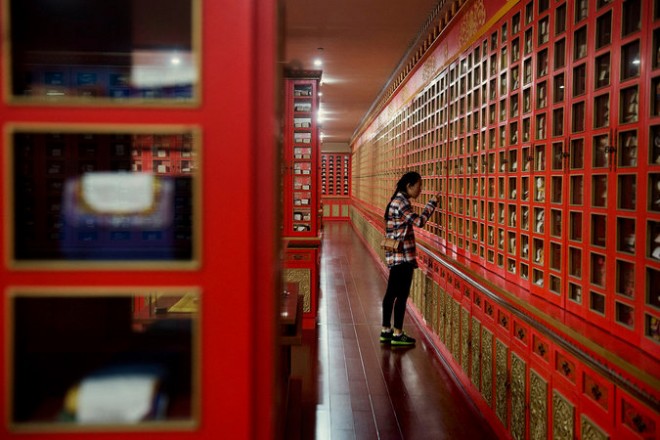In what marks the resolution of an historic episode, some 12,000 Tibetan-language books have been returned to China. Their collector was American scholar of Tibetan history and literature E. Gene Smith (1936-2010). Smith gathered many of the texts from Tibetan refugees during the decade of the Cultural Revolution. Smith made it his mission to collect and preserve these remnants of Tibetan culture, amassing the world’s largest private collection of Tibetan literature. He donated his collection to the Southwest University for Nationalities in Chengdu – but not before making a digital copy of every text. “They came from Asia, and Asia is where they belong,” Smith said. Included in the donation are salaries for four archivists to scan and catalogue the texts, which are freely accessible online.
The new Tibetan Buddhist Resource Center opened its library last October. Chengdu, which is 1,200 miles from Lhasa, has a large Tibetan community. Since it opened, further manuscripts have been brought to the Centre which were thought to have been lost or destroyed. Many had been preserved by Tibetan monks.
Born in Utah, Mr. Smith spoke 32 languages and spent much of his life working for the Library of Congress. His interest in Tibetan literature began through an encounter with a Buddhist lama, who was brought to America by the Rockefeller Foundation in 1960. Smith converted to Buddhism, and moved to India in search of Tibetan books. He printed thousands of copies of rare texts to distribute to libraries internationally, always keeping a copy in his own library.
Source: New York Times

一名西藏法学院学生正站在西南大学图书馆中。摄影:纽约时报Gilles Sabrie